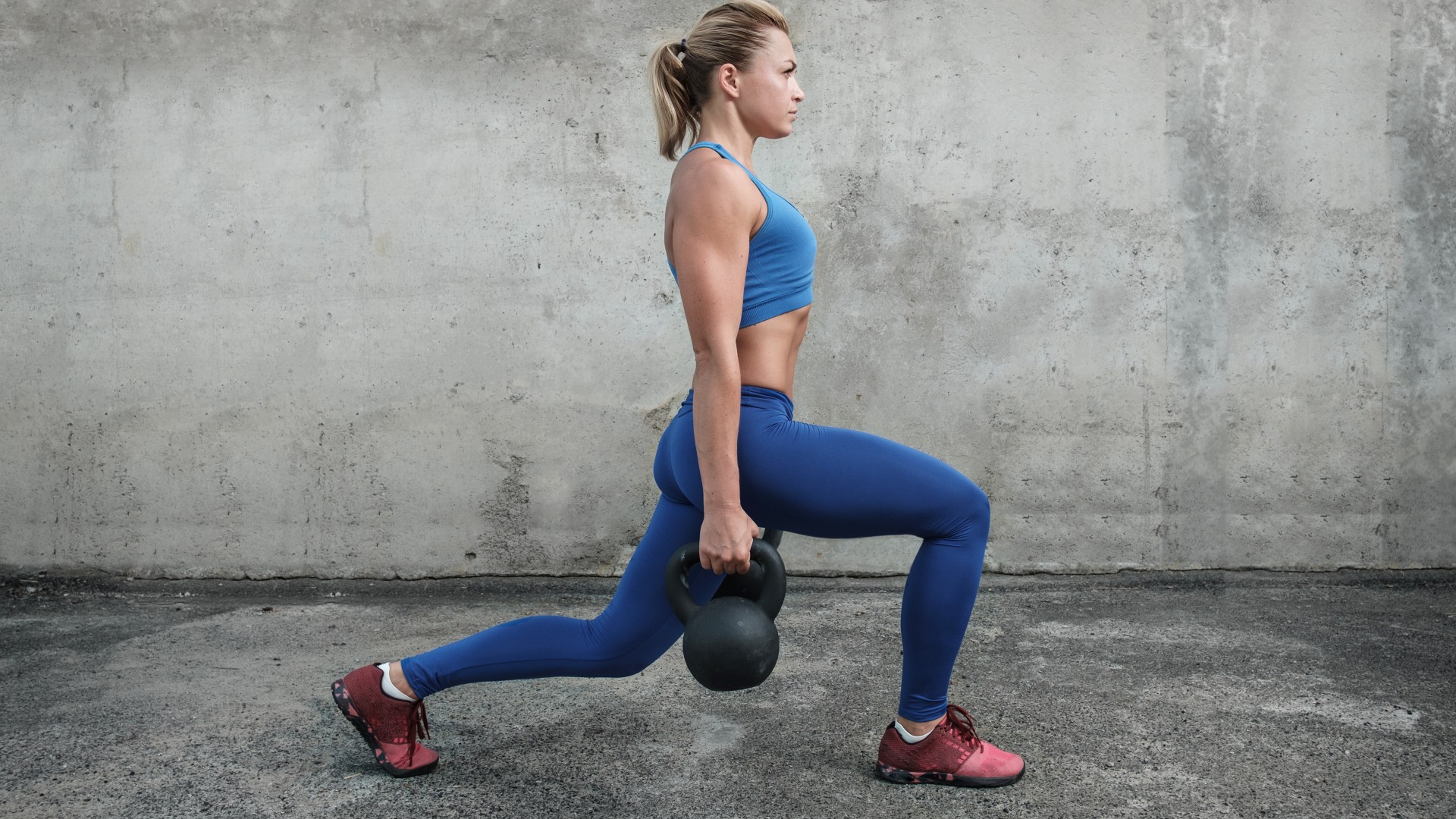
This four-exercise kettlebell leg workout will send your quads, glutes and hamstrings into savage burn mode without gym machines or barbells. So if your goal is to strengthen your legs and build muscle, this is certainly worth a try.
Designed by @mcontifitness and posted to YouTube by the legends at Kettlebell Kings, this leg workout brilliantly beasts up your next leg day using one kettlebell of a challenging weight.
But if your knees begin to sing out during lunges, we recommend substituting them for another of your choosing. Here’s how to do the leg routine, and be sure to grab one of the best kettlebells for weightlifting before you do.
What is the Oh My Quad kettlebell leg workout?
Together, the four leg exercises target and strengthen the hips, glutes, quads, hamstrings and calves and will require plenty of core engagement, meaning you could build a stronger midsection, too.
We recommend using a medium weight or adjustable kettlebell if you prefer. Here’s a rundown of the exercises:
E2MOM — 6 ROUNDS
5 kettlebell tactical cleans
Get instant access to breaking news, the hottest reviews, great deals and helpful tips.
5 kettlebell offset front rack squats
5 kettlebell front rack reverse lunges
Repeat on the other side
5 per side loaded beast cross reach
Rest, rinse and repeat.
Let’s briefly crunch the numbers. An E2MOM simply means you’ll complete the routine above every two minutes, resting for the remainder of that time.
Complete the first three exercises (only alternate sides on the first exercise) on one side, then complete them again on the other side. Once you’ve finished, complete five loaded beast cross reaches per side, alternating each time. Rest until you hit two minutes, then repeat for six rounds.
Conti uses a 12kg kettlebell, but you could scale if you only have a light weight available. Consider doubling the reps and making the EMOM longer or adding more rounds, for example.
Squats, lunges and cleans resemble the types of movements you do every day, and this leg workout is perfect for those who prefer dipping their toes into functional training methods.
If you’re familiar with the leg exercises but don’t train with kettlebells very often, we cover how to hold a kettlebell properly to help you determine which grip to use and when.
During the kettlebell leg workout, try to finish with some time to rest and recover. You should be able to finish with 30 seconds to spare, but even 15-20 seconds is better than nothing.
1. Kettlebell tactical cleans
Unlike regular cleans, you’ll land the bell on the outside of the opposite forearm. For example, if you clean with the left arm, the bell will land on the outside of the right forearm, not on the same side. If you’re new to cleans, learn the standard method first before attempting to switch sides mid-air.
2. Kettlebell offset front rack squats
The offset position of the kettlebell in the rack position could help alleviate wrist pain and challenge your core muscles harder to keep you stable as you squat. We cover the double kettlebell front squat here if you want to learn how to squat from a front rack position using two kettlebells.
3. Kettlebell front rack lunges
Keep the kettlebell racked as you move from squats to lunges without resting or releasing the bell. Kettlebell complexes are similar to yoga flow sequences because they combine exercises together one after the other. Done properly, complexes can become pretty meditative as you flow from one exercise to the next.
Reverse lunges avoid front-loading the knee the same way as forward lunges, but if your knees don’t enjoy lunging, switch to a leg exercise you enjoy, such as split squats or deadlifts.
Bottom line
Complete the reps before you rest, moving smoothly from one exercise to the next. Your core, quads and glutes should drive movement at all times to protect your lower back, but make sure you lift a challenging weight that still allows you around 30 seconds to rest.
You shouldn’t need more than six rounds to hammer your legs with these moves, but if you do need extra fire, add extra time and lengthen the eccentric phase of each exercise.
During lunges and squats, that means slowing down as you lower your body weight toward the floor, then pushing upward explosively. Studies indicate that eccentric-focused training could elicit better results for strength and muscle building than concentric-focused.
More from Tom's Guide
- Forget push-ups, this kettlebell shoulder workout chisels your pecs and shoulders in 3 moves
- I did the standing dead bug ab exercise every day for a week, here are my results
- I did a Zumba dance workout every day for a week, here's what happened

Sam Hopes is a level 3 qualified trainer, a level 2 Reiki practitioner and fitness editor at Tom's Guide. She is also currently undertaking her Yoga For Athletes training course.
Sam has written for various fitness brands and websites over the years and has experience across brands at Future, such as Live Science, Fit&Well, Coach, and T3.
Having coached at fitness studios like F45 and Virgin Active and personal trained, Sam now primarily teaches outdoor bootcamps, bodyweight, calisthenics and kettlebells.
She also coaches mobility and flexibility classes several times a week and believes that true strength comes from a holistic approach to training your body.
Sam has completed two mixed doubles Hyrox competitions in London and the Netherlands and finished her first doubles attempt in 1:11.

